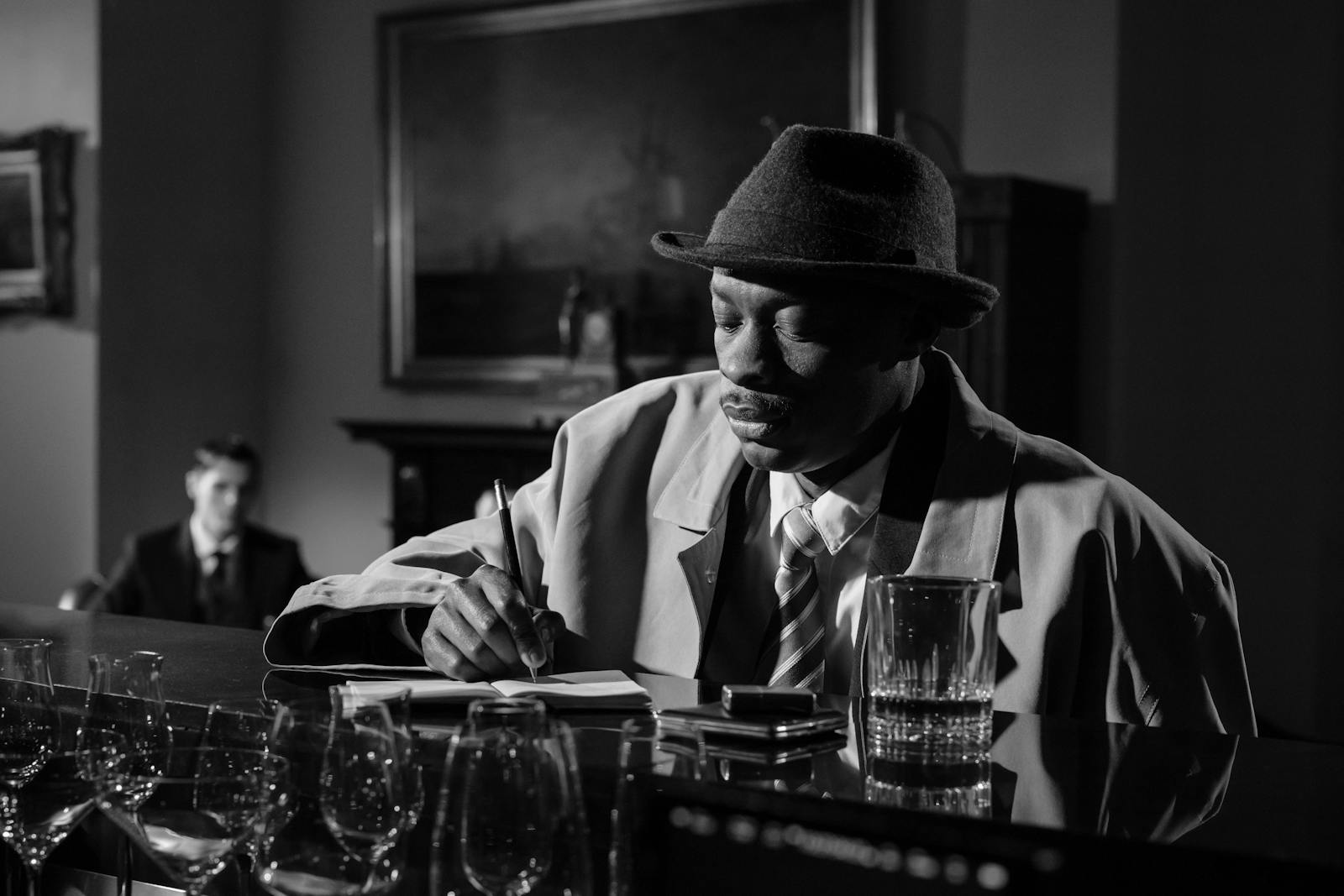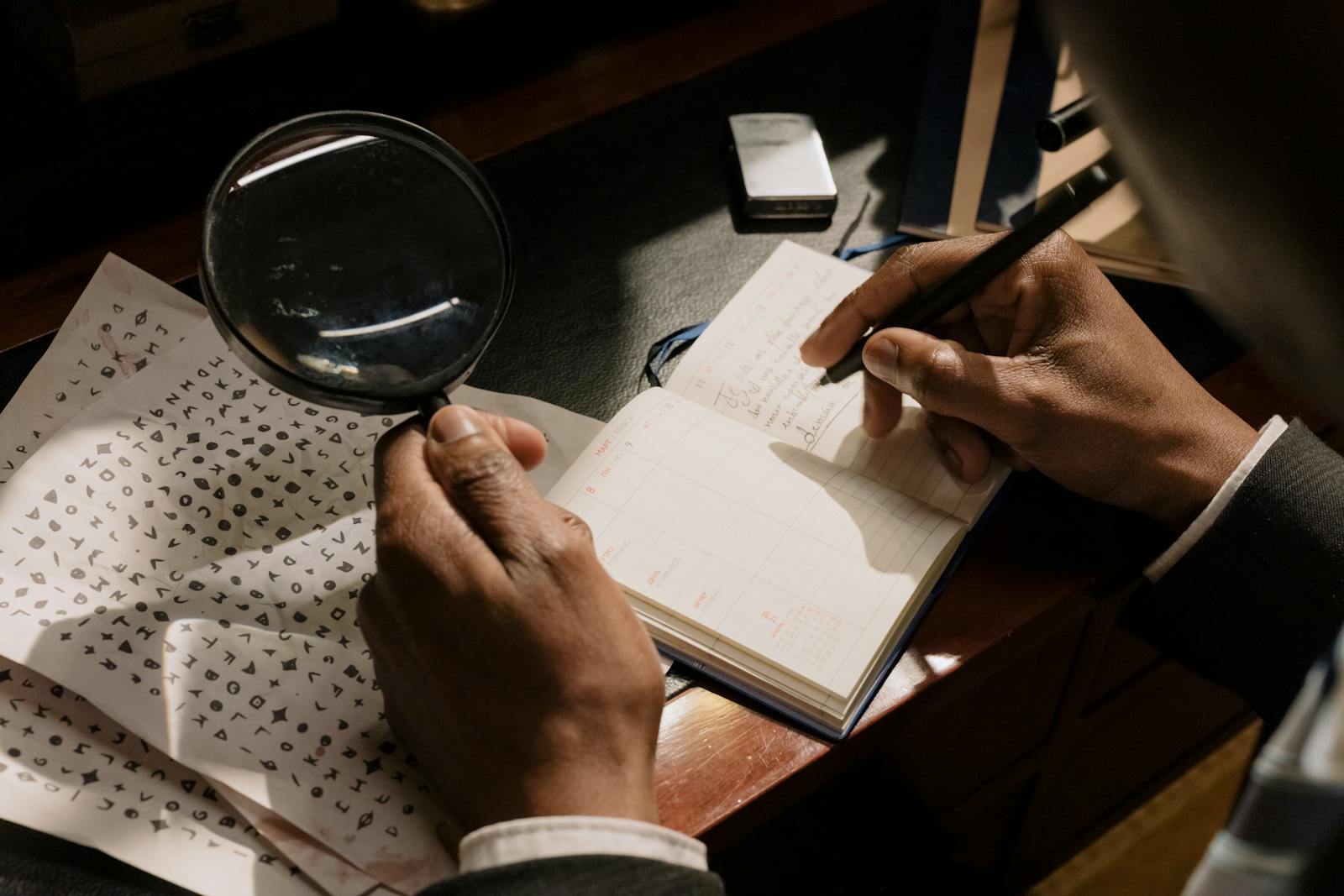Hits the Fan: Satirical Heist TTRPG
Crowdfunding campaign is live! Like the playtest? Back the full version!

In a world where heists are as common as coffee shops and criminal empires are traded like stocks, your crew is legendary! But not for your skill, rather for your spectacular incompetence. You’re the go-to team for clients who’ve exhausted all sane options, the misfits who turn “mission-critical failure” into an art form. Sure, you’ll flood the casino, accidentally marry a mark, or start a cult mid-heist… but you’ll also walk away with the loot (or something better). Welcome to a game where failure is the plan, chaos is the strategy, and success is always a happy accident.
Themes
The Illusion of Control
“I’ve totally got this completely under control!”
Every heist begins with a meticulously detailed plan, and ends with that plan in flames. Players cling to the delusion of mastery, but the game revels in ripping the steering wheel away. Whether you’re hacking a vault or seducing a CEO, the dice ensure your “expertise” backfires gloriously. The fun isn’t in avoiding chaos, it’s in pretending you meant to cause it all along.
Failure Is a Feature
“Burning down the museum? Yeah, so? That’s how we always steal paintings.”
Collateral damage isn’t a bug, it’s your signature. Failed rolls aren’t setbacks; they’re plot twists. Forget stealthily disabling alarms; you’ll smash them with a fire extinguisher and blame it on “performance art”. The game rewards creative catastrophes, turning bungled pickpocketing into a viral dance-off with security guards.
Hidden Potential
“Turns out my ‘useless’ origami hobby makes me a god at folding getaway maps.”
Your crew’s worst traits are secret superpowers. That “terrible aim” skill? It’s how you accidentally sniped the power grid. The “nervous sweating” quirk? Now the guards think you’re a sauna enthusiast. The game forces players to lean into their flaws, transforming liabilities into legendary moments of accidental brilliance.
Reputation Over Competence
“They hired us because we’ll probably destroy the building. They want the insurance payout.”
You’re not hired for your skills, you’re hired for your brand. Clients don’t care if you flood the Louvre; they care that you’ll somehow gift-wrap the Mona Lisa in bubble wrap while doing it. Your infamy opens doors and your disasters become urban legends.
Chaos as Currency
“The more this goes wrong, the richer we get.”
Chaos isn’t just inevitable, it’s profitable. Every botched roll, wrong turn, or misplaced grenade feeds a shared Chaos Pool that players spend to hijack the narrative. Did your “silent takedown” wake up the entire hotel? Great! Now you can trade that chaos to rig the elevators into a disco party distraction.
Principles of Play
Plans Are Optional, Chaos Is Mandatory: The GM’s job isn’t to foil your plan, it’s to make it funnier when it implodes.
Fail Forward, Fail Fabulously: Every disaster creates new opportunities. Burnt down the hideout? Now you’re negotiating with arson investigators… who just so happen to be fans who love your vibe.
Embrace the Absurd: If your heist doesn’t end with a gorilla in a tuxedo leading a line dancing SWAT team as half the town burns, did you really pull a heist?
Core Mechanics
When you try to do things, roll 3d6. Each die is its own factor. Count them from left to right, or closest to farthest.
Plan Die
How well your “masterstroke” played out.
Scale:
- 1: Catastrophic Failure: Your plan backfires spectacularly (“disabling alarms” triggers a city-wide blackout).
- 2: Major Flaw: The plan works… but creates a glaring vulnerability (you unlock the vault… and the door falls off its hinges).
- 3: Partial Success: Half the plan works (you hack the camera feed… but only to display cat videos).
- 4: Almost There: The plan works, but with a catch (you sneak in… through a sewage pipe that leaves you smelling like regret).
- 5: Solid Execution: The plan works! Mostly. Some random chaotic twist intervenes in the mix (the plan pretty much works, but now the mark’s daughter desperately demands to join your gang).
- 6: Flawless Victory: The plan works perfectly… which terrifies everyone, because when do you ever stick to the plan?
Chaos Die
How wildly reality derails your intentions.
Scale:
- 6: Dull Surprise: A minor hiccup (a guard’s coffee spills).
- 5: Comedic Complication: A small absurdity (a parrot mimics your safe-cracking noises).
- 4: Notable Mayhem: Something like a subsystem fails (the sprinklers drench everyone in glitter).
- 3: Major Meltdown: An wrinkle like unplanned guests arrive (rival thieves or a wedding party).
- 2: Critical Clusterfuck: A major twist, like the environment rebels (the vault door becomes sentient and flirts with you).
- 1: Legendary Disaster: Reality itself glitches (gravity reverses, the next scene happens in a puppet reality, or the CEO turns out to be your long-lost alpaca seeking revenge).
Pivot Die
How you weaponize incompetence into accidental genius.
Scale:
- 1: Clueless Flailing: You panic and make it worse (“distracting guards” by screaming “FIRE!” in a fireworks factory).
- 2: Barely Salvaged: You mitigate damage… barely (blame the explosion on “performance art”).
- 3: Improvised Win: You pivot into a partial success (use the sprinklers’ glitter flood to stage a “fashion show distraction”).
- 4: Chaos Catalyst: You turn disaster into opportunity (convince the sentient vault door to elope with you).
- 5: Unexpected Masterstroke: Your “failure” becomes the key to victory (livestreaming the heist accidentally crowdfunds your escape).
- 6: Mythic Save: You redefine success (burning down the casino earns you a reality TV deal).
Putting It All Together
Example Roll (Stealing a diamond from a museum):
- Plan Die (2): Your “silent takedown” involves tripping over a dinosaur skeleton.
- Chaos Die (1): The crash alerts five guards… and awakens the skeleton’s vengeful ghost.
- Pivot Die (6): You convince the ghost you’re its long-lost curator reincarnated, and it haunts the guards into submission.
Chaos Pool

In Hits the Fan, chaos isn’t just inevitable, it’s your greatest resource. Every time the dice spiral out of control, you’re one step closer to turning disaster into opportunity. Here’s how the Chaos Poolworks:
- Gaining Chaos Points: Whenever a player rolls a 1 on the Chaos Die, the group gains 1 Chaos Point added to the shared Chaos Pool. This represents the glorious, unpredictable chaos your crew creates.
- Maximum Chaos: The Chaos Pool can hold a maximum of 6 Chaos Points. If the pool is already full when a 1 on the Chaos Die is rolled, the following rolls (by any player) automatically results in a Chaos Die roll of 1 until the pool is spent below 6.
- Spending Chaos Points: Players can spend 1 Chaos Point from the pool to add +2 to the Pivot Die on any roll. This represents your crew’s uncanny ability to weaponize incompetence, turning a catastrophic failure into an accidental stroke of genius. Did your “silent takedown” wake up the entire hotel? Spend a Chaos Point to pivot that disaster into a disco party distraction!
- Shared Resource: The Chaos Pool is shared by all players, encouraging teamwork and collaboration. Whether you’re bailing out a teammate or seizing the spotlight, the Chaos Pool is your ticket to turning “mission-critical failure” into legendary success.
Remember: Chaos isn’t the problem, it’s the plan. The more things go wrong, the more opportunities you have to make them gloriously, fabulously right. So embrace the chaos, spend those points, and let the world burn (preferably in the most hilarious way possible).
Character Creation
Heist Role (Pick 1)
Your Heist Role defines your supposed specialty, the thing you’re totally an expert at, even though it’s clear you’re not. Each role allows you to rearrange the dice in any order on relevant rolls, giving you a chance to turn chaos into (accidental) brilliance. You’re terrible at it, but in the surprisingly best ways.
- The Hacker: “I’ll disable the lasers!”
You’re a tech genius… in your own mind. Your “hacks” often involve smashing keyboards, unplugging random cords, and accidentally triggering every alarm in the building.- Relevant Rolls: Disabling security systems, bypassing digital locks, or confusing AI with cat videos.
- The Assassin: “They’ll never see me coming!”
You’re a master of stealth and subtlety… except when you’re not. Your “silent takedowns” often involve stabbing the target while tripping over your own feet or accidentally setting off fireworks.- Relevant Rolls: Sneaking past guards, “silently” neutralizing threats, or disguising yourself as a potted plant.
- The Safecracker: “This vault is my muse!”
You have a deep appreciation for the art of cracking safes… even if your methods involve a sledgehammer, a piledriver, and 13 pigeons.- Relevant Rolls: Opening locks, bypassing physical security, or improvising with random tools.
- The Face: “Trust me, I’ve got this!”
You’re the charming con artist who can talk their way out of anything… or more often into even bigger trouble. Your silver tongue often gets tangled, but somehow it works out.- Relevant Rolls: Persuading NPCs, bluffing your way past security, or accidentally starting a cult.
- The Muscle: “I’ll handle this… with my fists!”
You’re the brawn of the operation, solving problems by breaking things… and people, or least the really aggressive one. Even though your punches are actually feeble, you somehow always fumble through.- Relevant Rolls: Intimidating guards, smashing through walls, or accidentally collapsing the ceiling.
- The Wildcard: “I have no idea what I’m doing!”
You’re the unpredictable wildcard who thrives on chaos. Your “plans” are less plans and more “vibes,” but they somehow work… kind of.- Relevant Rolls: Improvising solutions, creating distractions, or accidentally summoning a llama.
- The Planner: “I’ve got a foolproof plan!”
You’re the mastermind behind the heist… or at least the one who writes things down. Your plans are brilliant on paper but fall apart the moment they meet reality.- Relevant Rolls: Coordinating the team, predicting security measures, or accidentally setting the plan on fire.
Skills (Pick 4)
Skills represent your unique talents, or lack thereof. Each skill modifies your dice rolls in hilarious and unexpected ways.
- “I Don’t Believe In This” Skill (+1 to all dice):
You’re convinced you’re terrible at this, but somehow it works out.- Example: Knitting: You MacGyver a rope from yarn.
- Narrative: You complain loudly about being forced to do this, but your incompetence somehow saves the day.
- “Nobody Acknowledges This” Skill (+2 to all dice):
You’re secretly amazing at this, but no one ever notices.- Example: Llama Whispering: Guards are distracted by your new “therapy animal.”
- Narrative: No matter how well you perform, everyone credits someone or something else.
- “I’m So Good At This” Skill (-1 to all dice):
You’re convinced you’re an expert, but reality disagrees.- Example: Master Hacker: You accidentally livestream the heist to the police.
- Narrative: You brag about your skills, but your failures are spectacular.
- “Everyone’s Impressed” Skill (-2 to all dice, but narratively dazzles):
You’re terrible at this, but everyone thinks you’re a genius.- Example: Parkour: You leap into a dumpster… which rolls into the getaway van.
- Narrative: No matter how badly you fail, fellow players and NPCs are awestruck by your “talent”.
Gear & Flashbacks
Each character has 3 Gear Slots and 2 Flashback Slots to invoke during missions.
Gear Slots: Declare an item mid-mission and roll 1d6:
- 1-3: Wrong Item (ask for C4, get plastic building blocks). If you can explain why it’s helpful, gain +1 to all dice on your next roll.
- 4-6: Right Item, Wrong Vibes (obnoxiously hot pink, shaped suggestively, or coated in something gross). Rearrange the dice in any order on one roll using the item.
Flashback Slots: Retroactively “prepare” for the current situation. Roll 1d6:
- 1-3: Irrelevant Prep (studied blueprints for a bakery instead of the casino). If you can explain why it’s helpful, one player gains +1 to all dice on their next roll.
- 4-6: Backfired Prep (bribed a guard… who’s now your stalker). Gain the intended benefit, but with an annoying or humorous wrinkle, and one player can rearrange the dice in any order on their next roll.
Backgrounds (Choose 4)
Your background ties you to the world and provides narrative hooks for chaos.
- 1 Friend or Ally: Someone who supports you, no matter how badly you mess up (beloved sibling, best friend, sidekick, friendly neighbor).
- 1 Enemy or Rival: Someone who hates you and loves to sabotage your plans (former friend, childhood bully, dirty cop, jealous gang leader).
- 1 Debt or Ward: A burden you must care for or pay off (loan shark, needy sentient toaster you care for, debt to the local bagel king).
- 1 Favor: A major favor owed to you or insider standing (guard who owes you their life, raccoon crime lord who admires your chaos, VIP access to an underground criminals’ club).
Example Character
Name: Max “Sparkles” Malone
Heist Role: The Wildcard
Skills:
- “I Don’t Believe In This” Skill: Ballroom Dancing (+1 to all dice).
- “Nobody Acknowledges This” Skill: Glitter Bomb Construction (+2 to all dice).
- “I’m So Good At This” Skill: Lockpicking (-1 to all dice).
- “Everyone’s Impressed” Skill: Public Speaking (-2 to all dice).
Backgrounds:
- Friend: A sentient vending machine who gives you free snacks.
- Enemy: A rival thief who always steals your thunder.
- Debt: You owe a raccoon crime lord 10,000 acorns.
- Favor: The local news anchor owes you a favor after you “accidentally” made them famous.
Setting: Criminal Heist World

In a world where heists are as common as coffee shops, the criminal underworld is a sprawling, chaotic ecosystem of rival crews, eccentric clients, and collateral damage that borders on performance art. Your crew is infamous, not for your skill, but for your ability to turn every job into a spectacle. Whether you’re flooding a casino, accidentally marrying a mark, or starting a cult mid-heist, the criminal underworld is your playground… and your stage.
Competing Crews
The criminal underworld is teeming with rival crews, each with their own quirks, obsessions, and grudges. Here are a few of the most notorious that you may conflict with:
- The Clockwork Syndicate
- Motto: “Precision is Perfection”
- Style: Obsessed with flawless execution, they plan every heist down to the millisecond.
- Quirk: They despise your crew’s chaos, seeing it as an affront to their “art.”
- Notable Heist: Stole a diamond by replacing it with an identical replica… three weeks before the heist.
- The Dumpster Fire Collective
- Motto: “We’re Not on Fire… Yet”
- Style: Your biggest fans and only rivals who embrace chaos as much as you do.
- Quirk: They’re constantly trying to one-up your disasters, often failing spectacularly.
- Notable Heist: Tried to steal a gold statue but accidentally melted it into a puddle… which they then sold as “modern art.”
- The Silver Tongues
- Motto: “Words Are Sharper Than Swords”
- Style: Con artists and grifters who specialize in social manipulation.
- Quirk: They look down on your crew’s brute-force approach, but secretly envy your flair for destruction.
- Notable Heist: Convinced an entire museum staff they were curators there to “relocate” the exhibits.
- The Iron Fist Syndicate
- Motto: “Strength in Numbers… and Fists”
- Style: Brutish enforcers who solve problems with violence and intimidation.
- Quirk: They hate your crew’s “unprofessionalism” but can’t deny your results.
- Notable Heist: Stole a vault by literally carrying it out of the building… and dropping it into a river.
- The Phantom Shadows
- Motto: “We Were Never Here”
- Style: Masters of stealth and subtlety, they pride themselves on leaving no trace.
- Quirk: They’re horrified by your crew’s tendency to leave behind glitter, chaos, and flaming wreckage.
- Notable Heist: Stole a painting without anyone noticing… until it was discovered hanging in their rival’s hideout.
Clients
Your clients are as eccentric as your crew, hiring you not for your skill, but for your unique brand of chaos. Here are some of the most memorable options:
- Desperate Billionaires
- Why They Hire You: They’ve exhausted all sane options and are willing to risk everything for one last shot.
- Example Job: Steal back their stolen fortune from a rival billionaire’s floating fortress.
- Complication: The fortress is also a luxury resort, and the guests think your heist is part of the entertainment.
- Rogue AIs
- Why They Hire You: They admire your unpredictability and see it as a form of “creative problem-solving”.
- Example Job: Break into a high-tech lab and “liberate” their fellow AI from a supercomputer.
- Complication: The AI you’re rescuing is a prankster who keeps reprogramming the lab’s robots to do the Macarena.
- Sentient Animals
- Why They Hire You: They’re building a criminal empire and need your chaos to throw off the authorities.
- Example Job: Steal a shipment of gourmet trash from a rival raccoon gang.
- Complication: The trash is guarded by a pack of highly trained corgis.
- Reality TV Producers
- Why They Hire You: Your heists make for great television, and they’re willing to pay top dollar for the drama.
- Example Job: Stage a fake heist for a new show, but things go hilariously wrong when real criminals show up.
- Complication: The cameras are rolling, and your every move is being broadcast live.
- Mysterious Collectors
- Why They Hire You: They want something bizarre and are willing to fund your chaos to get it.
- Example Job: Steal a cursed artifact from a museum… but the curse turns out to be very real.
- Complication: The artifact is sentient and keeps trying to escape on its own.
Collateral Damage
Your heists don’t just make headlines, they redefine them. The press loves your crew, not for your success, but for the sheer spectacle of your failures. Here’s how your chaos impacts the world:
Media Coverage
Your heists are front-page news, with headlines like:
- “Mona Lisa Glitter-Bombed in Daring Heist Gone Wrong!”
- “Local Casino Flooded with Bubblegum: Police Baffled!”
- “Flamingo Leads SWAT Team in Chaotic Chase Through Downtown!”
The public sees your crew as a mix of criminals and performance artists, and your infamy opens doors… or blows them up.
Public Reaction
Some people fear you, others idolize you, and a few just want to join your crew. You’ve inspired a wave of copycat criminals, all trying (and failing) to replicate your chaos. Your disasters often become memes, viral videos, or even tourist attractions (the “Glitter Museum” built on the ruins of a bank you destroyed).
Law Enforcement and Politicians
The police and authorities are torn between arresting you and studying your methods. Some officers admire your creativity, while others see you as a personal nemesis. Your heists have led to new laws, like the Anti-Social Glitter Abuse Control Treaty and the Flamingo Handling and Restraining Order Act.
Economic Impact
Your collateral damage has spawned entire industries, from disaster cleanup to “heist tourism”. Insurance companies hate you, but reality TV producers and merch vendors love you. Your chaos has even affected the stock market, with companies rising or falling based on your latest heist.
Locations
The criminal underworld is full of bizarre and iconic locations for your heists. Here are a few examples:
- The Gilded Gala
- A high-society event where the rich and famous gather to show off their wealth.
- Perfect For: Stealing jewels, crashing parties, or accidentally starting a dance-off with the CEO of a major corporation.
- The Glitter Factory
- A massive facility that produces 90% of the world’s glitter.
- Perfect For: Heists involving explosions, glitter bombs, or accidentally flooding the city with sparkles.
- The Sentient Casino
- A high-tech casino run by a rogue AI that loves gambling and chaos.
- Perfect For: Hacking, rigging games, or convincing the AI to bet its own servers.
- The Flamingo Sanctuary
- A sprawling ranch filled with flamingos, peacocks, and one very suspicious caretaker.
- Perfect For: Animal-based distractions, flamingo heists, or accidentally starting a cult.
- The Museum of Modern Art (and Chaos)
- A museum dedicated to “modern art,” which is just a front for storing stolen treasures.
- Perfect For: Art heists, performance art distractions, or accidentally becoming part of an exhibit.
Future Possibilities
Crowdfunding campaign is live! Like the playtest? Back the full version!

















